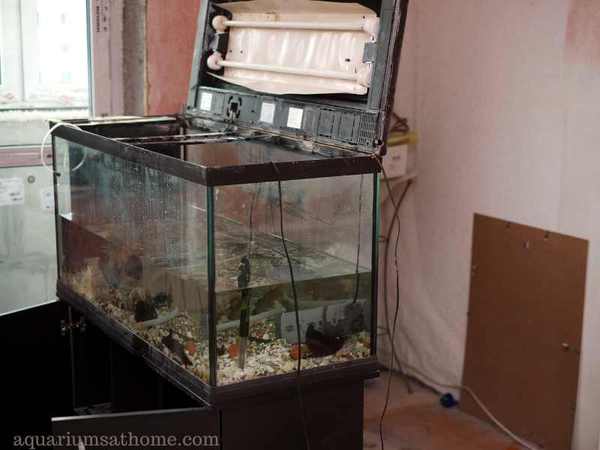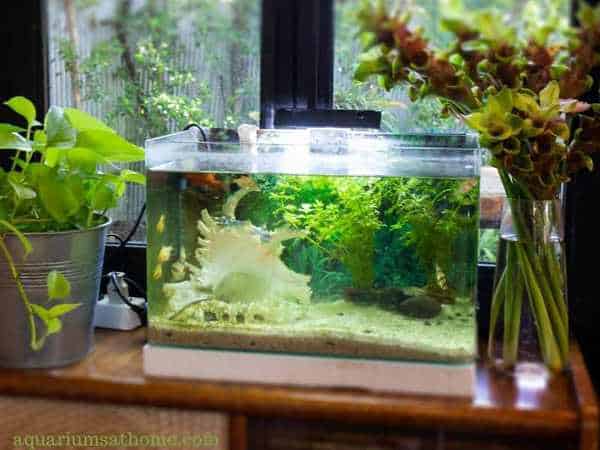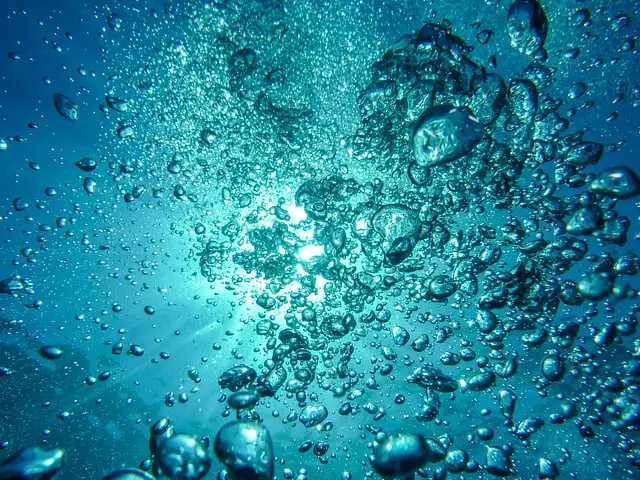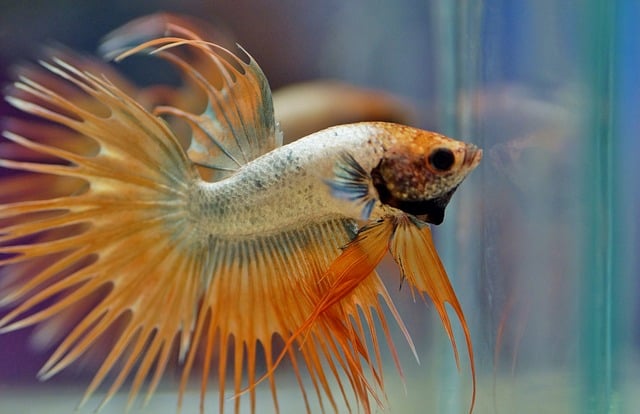Fish tanks are great fun to watch, but they also require some maintenance. If you don’t take care of them properly, they can become unsanitary or even dangerous. In this article, we’ll go over common fish tank problems and what you can do to prevent them?
This article is primarily for freshwater fish tank owners however, most of the helpful tips below work well for saltwater tanks too.
So, if you’re ready to learn more, then let’s begin!
Common Fish Tank Problems and How to Avoid Them
Owning a fish tank is a fun hobby, but you should never forget you’re caring for living creatures. Fish keeping, to me, is a stress-reliever, much like gardening is to plant-lovers. It’s easy to forget that it’s not just a hobby – your fish are living creatures and counting on you for their well-being and survival.
Here are the most common problems plaguing beginner aquarists:
1. Starting with a small aquarium. Aquariums smaller than 20 gallons are usually harder to keep than larger ones and are unsuitable for beginners. Large tanks tend to be more stable than smaller ones and if something goes wrong, you have more time to correct it.
First-time aquarists should consider aquariums between 20 to 55-gallons. Start with the biggest aquarium you can afford. If you must have a smaller tank, then consider setting up a quarantine tank as well so if there’s ever an issue, you can place the fish in it until the problem’s been rectified.
2. Not cycling the fish tank water long enough. This is called the nitrogen cycle – for an in-depth explanation, make sure to check out my article on the topic here. It takes time to establish the biological water parameters in a fish tank.
There are biological products on the market that can help speed up this process however, I prefer letting your tank run through the nitrogen cycle naturally. My experience with biological enhancers is that they’re a quick fix, not a permanent one. The best way to cycle a new fish tank is to:
- Add a small amount of fish food to the tank, allowing beneficial bacteria to grow naturally.
- Add some water from an established tank as it will contain beneficial bacteria.
- Take a filter sponge or other media from an established tank and put it in your filter. This is the absolute best way to add bacteria to a new tank.
- Test the ammonia, nitrite, and nitrate levels weekly until the parameters are where they should be. I have an in-depth article on the topic here. Once your parameters are good, you can add fish as desired.
3. Buying fish and a tank at the same time. This happens all the time and it shouldn’t be allowed by fish store employees -unless you have cycled water sitting at home in barrels waiting to be poured into a new fish tank, that is. Chances are, you don’t.
Please read the section above regarding cycling your fish tank for further explanation on why this is wrong.

4. Adding too many fish at the same time. The bio-load of your fish tank is affected by things such as excess food, fish poop, decaying plants, dead fish, etc. Beneficial bacteria cleans the water and creates balanced water parameters. Adding to many fish all at once will cause ammonia and nitrite levels to rise, which is toxic and dangerous and will kill the fish.
What normally happens is the cycled water now gets bumped out of being cycled and must start all over again going through the nitrogen cycle. Either way, your fish will die so its important to only have a few fish at a time, not a dozen (assuming your tank is big enough to hold that many fish).
5. Not testing the water with a kit. You can’t tell what the ammonia, nitrite, and nitrate levels are in the tank if you don’t test for them. Whether you have a new tank or an established one, all tanks should be tested. New tanks obviously need to be tested more often but established tanks should be checked once every 4 to 6 weeks to ensure something isn’t going wrong.
The problem you run into with an established tank if there are older fish in it is they probably won’t show signs of distress until the levels are too high.
Regarding newly purchased fish, it’s very stressful for them when being added to a new tank. Compound the stress with unsuitable water parameters and you’re certainly not going to see them alive for very long. Frequent testing is the only way to know if your aquarium water is fish safe.
6. Overstocking the tank. When you first start keeping fish, you want to buy every cool fish you see. This is the typical shiny object syndrome. However, there’s a limit to the number of fish an aquarium can hold, no matter how big it is or how efficient its filter is.
Some fish grow larger after they’re purchased or get territorial and become aggressive when overcrowded. It’s better to have less fish in your aquarium than too many.
7. Overfeeding the fish. You don’t have to worry about your fish going hungry. Fish don’t need much food and contrary to popular belief, don’t need to be fed daily. If you feed them too much, you’ll cause more harm than good.
Aquarium fish can be fed once a day or less. When feeding, the rule of thumb is only enough food to be consumed within two minutes. If the fish don’t eat all the food, it’ll decay in the water, causing ammonia and nitrite levels to rise. This is very dangerous to the fish.
8. Using to small of a filter. Over-filtering an aquarium will never be an issue, but it’s fairly easy to under-filter one. Aquarium filters are rated by how many gallons they filter per hour. They have suggested tank sizes that they work best with.
This rating system works well, but if you’re going to keep an aquarium with large monster fish or ones that produce a lot of waste, you may want to consider using an oversized filter.
For best results, always buy a filter that is rated to fit an aquarium a larger than the one you already have. You can always turn the water flow down if you find the current is too strong for the fish.
9. Seeking advice from inexperienced hobbyists. It’s difficult to know which techniques will be most effective when starting out with a new aquarium setup if you’re new to the hobby. The best thing to do is follow one reliable source of information for fish keeping.
You will quickly realize that every fish owner has different experiences and techniques. This results in different experiences and successes with keeping fish. I’d recommend finding a local fish store that’s run and managed by the owners and get help from them.
Most big box type stores have employees that don’t know what the nitrogen cycle is.
10. Buying fish that you have no idea how to keep. Before buying new fish, always research them to make sure they’re compatible with existing inhabitants and won’t outgrow your tank. Some fish need specific water parameters such as hard water or soft water, which you may not be able to get from your local tap water.
My tap water happens to be extremely hard and wouldn’t be ideal for fish such as neon tetras. If you’re thinking about buying fish, make sure you know what kind of specialized food they might require beforehand. Carnivores and herbivores will require a different diet.
11.Leaving the light on for too long. Fish need a resting period, just like every other creature on earth. The lighting should reflect that of a typical day/night cycle. Keeping the aquarium light turned on for too long stresses the fish and promotes unsavory algae growth.
To create a consistent lighting schedule for your fish tank, I highly recommend using a timer if your lights don’t already have one. My lighting schedule is lights on at 1PM and off at 9PM. Before 1PM the tanks get indirect sunlight.

12. Over-cleaning a new tank setup. When a new aquarium is first set up, the biological balance is fragile and it takes time for the water parameters to stabilize. Don’t clean the gravel or the filter if it doesn’t need it. Doing so could destroy beneficial bacteria and disrupt the water parameters. This could cause the nitrogen cycle to start all over again and will kill your fish.
If your aquarium or filtration system seems to require cleaning within the first 2 to 3 months, your filter is too small and you may have too many fish or you may be feeding them too much.
13. Topping off the water instead of doing regular water changes. “Topping off” the tanks water doesn’t remove toxins. If you don’t remove water from the tank, toxins build up. Nitrates can only be removed by vacuuming the substrate.
If you have a freshwater tank with live plants, they’ll absorb some of the nitrates, but water changes should still be performed. This causes stress for your fish and weakens their immune system which makes them more vulnerable to disease.
Performing regular tank maintenance is one of the most important things you can do for your aquarium.
14Not setting up the inside of the tank properly. Understanding what your fish need to live a healthy and long life is important. For example, if you have cichlids, you want open space and decorations like rocks that won’t move easily.
If you have a tank with smaller fish like tetras, you should have plants or other decorations where they can hide in, if necessary. If your fish feel safe, they won’t be stressed so do your due diligence in advance.
Final Thoughts
In conclusion, everything boils down to understanding the relationship between healthy aquarium water and the fish in the tank. You need to know how to keep your water parameters stable as well as what the right kind of fish are for your tank setup.
Once you have a good balance between these things, your tank will be healthy and your fish will be happy.
Recommended Posts
How to Test Fish Tank Water Without a Kit
How to Keep the Bottom of a Fish Tank Clean?
What Happens if a Fish Tank is Too Small?
What to do with Snail Eggs in Your Freshwater Tank?
How to Adjust pH in an Aquarium Safely?
Can I Put a Fish Tank in Front of a Window?
Do Fish Know They’re in a Fish Tank?






